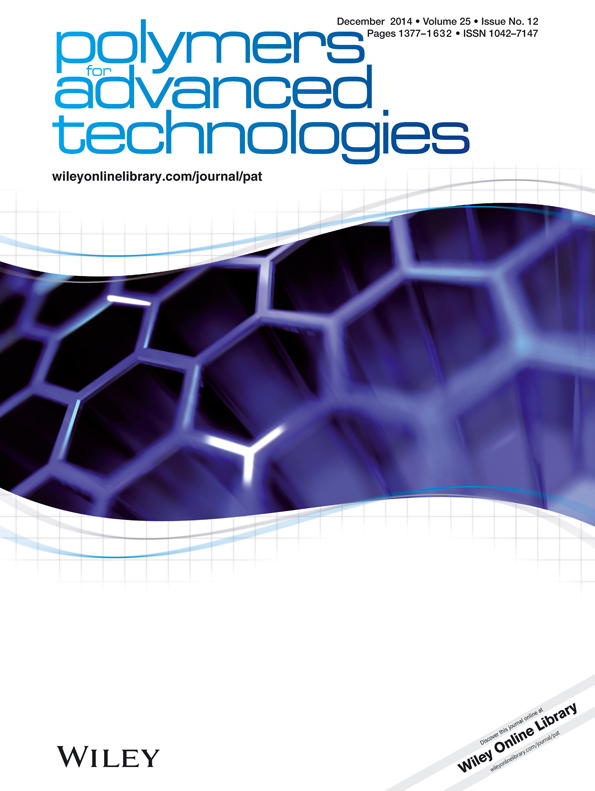Pyridine modified polyethylene copolymer compatibilizer for melt blended carbon nanotube composites: effects of chain structure and matrix viscosity
Abstract
The electrical percolation threshold of different polyethylene/carbon nanotube nanocomposites was studied as a function of chain structure, matrix viscosity, and the effect of compatibilizer. The lower the viscosity of the matrix the lower is the percolation threshold, regardless of the chain architecture and degree of crystallization. To improve dispersion a series of acrylic acid copolymer are introduced into the system. The highest concentration of acid co-monomer that maintain miscibility with the polyethylene matrix is 5 wt.%. The compatibilizer in its pristine form does not have a significant effect on dispersion and on volume resistivity. When the acidic copolymer was modified with aminomethylpyridine, in order to facilitate π–π interaction with the nanotubes, a 4-decade reduction was recorder for the high viscosity matrices at 10 wt.% compatibilizer loading. Copyright © 2014 John Wiley & Sons, Ltd.




